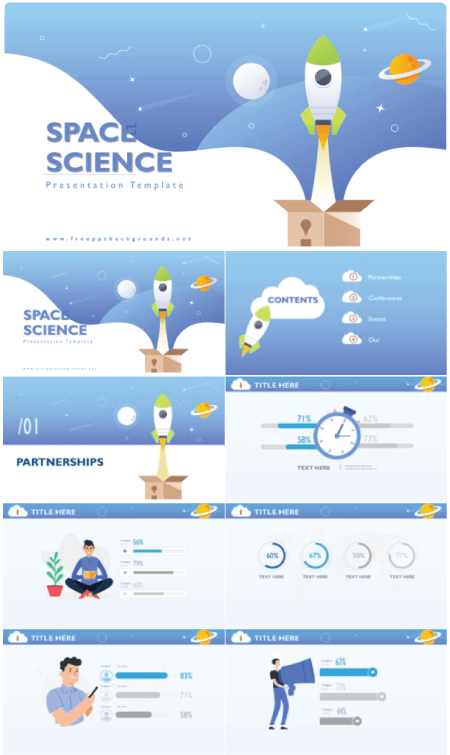showdirector Powerpoint Remote Apk Download
- REQUIRES ANDROID | Category: Productivity Rating 2 from 6 Votes $ Free 
i-Clickr Remote for PowerPoint Lite for Android
Download App
i-Clickr Remote for PowerPoint Lite for Android Screenshots
Download and install i-Clickr Remote for PowerPoint Lite APK on Android
In other to have a smooth experience, it is important to know how to use the APk or Apk MOD file once you have downloaded it on your device. APK files are the raw files of an Android app similar to how .exe is for Windows. The APK means Android Package Kit (APK for short). It is the package file format used by the Android operating system for distribution and installation of mobile apps.
In 4 Simple Steps, I will show you how to use i-Clickr Remote for PowerPoint Lite.apk on your Phone once you are done downloading it.
Step 1: Download the i-Clickr Remote for PowerPoint Lite.apk on your device
You can do this right now, by using any of our download mirrors below. Its 99% guaranteed to work . If you download the apk on a computer, make sure to move it to your android device.
Step 2: Allow Third Party apps on your device.
To install the i-Clickr Remote for PowerPoint Lite.apk, you must make sure that third party apps are currently enabled as an installation source. Just Go to Menu > Settings > Security > and check Unknown Sources to allow your phone to install apps from sources other than the Google Play Store.
On Android 8.0 Oreo, rather than check a global setting to allow installation from unknown sources, you will be prompted to allow your browser or file manager to install APKs the first time you attempt to do so.
Step 3: Goto Your File manager or browser location
You will now need to locate the i-Clickr Remote for PowerPoint Lite.apk file you just downloaded.
If you prefer, you can also download a file manager app here so you can easily find files on your Android device.
Once you have located the i-Clickr Remote for PowerPoint Lite.apk file, click it and it will start the normal installation process. Tap "Yes" when prompted for anything. However, be sure to read all on-screen prompts.
Step 4: Enjoy
i-Clickr Remote for PowerPoint Lite is now installed on your device. Enjoy!
Are APK Files Safe?
Disregard any rumors or a site that says otherwise. APK files are generally as safe as an .exe windows pc file hence, the most important thing to note is that you should always download it from trusted sites. You generally do not have anything to worry about as we have provided some of the safest sites in our Apk download mirrors below.
Thank you for reading this tutorial. Download your app below!
i-Clickr Remote for PowerPoint Lite v4.2.2 APK Download Mirrors
Whats new in i-Clickr Remote for PowerPoint Lite v4.2.2
- Release date: 2016-01-07
- Current version: 4.2.2
- File size: 40.25 MB
- Developer: Senstic
- Compatibility: Requires iOS 7.0 or later. or Android KitKat 4.4, Lollipop 5.0, Marshmallow 6.0, Nougat 7.0, Oreo 8.0, Android Pie 9.0, versions 10, 11, 12 or later
** NEW ** Now supports Apple Watch! ** NEW ** Now support Office 2016 and Office 365 Subscription. New York Times article on i-Clickr Remote: "PowerPoint presentations and the like are a bit easier to control remotely because, presumably, they are being viewed through a laptop. But the benefit is considerable. No longer tethered to your laptop, you can move around the room while still holding in your hand an image of what's on the screen behind you. No more of that weird over-the-shoulder karaoke move when checking to see where you are in the presentation." Go to your next PowerPoint presentation IN STYLE with i-Clickr Remote for iPhone, iPad, and iPod Touch! Features: * Complete control of your PowerPoint presentation including animations. * Record your presentation (slides and your voice audio) into a movie as you present. * Share PDF version of the presentation with audience via E-Mail. * View your slides AND slide notes directly on your iOS device during your presentation. * Navigate through your slides with finger swipes and taps. * Grab your audience's attention with real-time annotations (Windows only). * Help you track your presentation time with onboard clock. * Set presentation alarm so that your iOS device will alert you with a silent buzz before your time runs out. * Pause and resume presentations. * Switch between multiple slideshow. * Work with both Windows and Mac Office (see below for the Office versions supported), iWork '09 Keynote on Mac, and OpenOffice on Windows. * Easy to set up with zero configuration. * No additional cost when using with multiple host computers. * NEW: Control presentation from your Apple Watch. * NEW: Control external laser pointer. Requirement: * On Windows, support all versions of Microsoft PowerPoint (the free Microsoft PowerPoint Viewer is not supported). Microsoft PowerPoint for Windows (version XP or above) is required at the host PC. * On Mac OS X, Office Mac 2004 or above, or iWork '09 Keynote is required. * WiFi connection between the host computer and your device, or connection using direct ad hoc network and the iOS's personal hotspot. * Also support the FREE OpenOffice 3.1 on Windows. Limitation: * The free Lite version is limited to 15 pages of presentation. To download software required at your host computer (that is, the PC/Mac that will run your PowerPoint presentation), visit http://www.senstic.com/iPhone/iClickr/Download.aspx *** If you have problem getting i-Clickr to work, please contact us at support@senstic.com, and we will help you fix the problem.
Apk Mirror 1: : Download APK
Posted by: hallemeyerrene415.blogspot.com
Source: https://baixarapk.gratis/en/app/296956937/i-clickr-remote-for-powerpoint-lite
powerpoint Presentation On Technology Download
If you're amongst the science and technology teachers, students, or businesses in the field; we have something for you. We deep-dived to find the best free technology PowerPoint templates for your presentation, so today's collection has 28 amazing designs to choose from.
The following selection has templates related to science, technology, cybersecurity, search engines, bitcoin, networking, programming, and engineering, so there's something for everyone.
1. Computer Hardware Free Technology PowerPoint Template

This template sports a cool design with a bright light of a microchip processor and a blue background. Ideal for explaining concepts such as semiconductors, databases, and central computer processors.
- Theme: Technology, Hardware
- Slides: 48
- Customization: Fully editable + 136 editable icons
- Graphics: Vector
- Aspect Ratio: 16:9
- License: Free for Personal and Commercial Use │ Do Not Redistribute Any Components of the Template
Go To Free Download
2. Space Science Free Technology Powerpoint Templates

This free template has 3D space ship graphics and blue background color. It's great for presentations on astronomy.
- Theme: Technology, Cosmos
- Slides: 25
- Customization: Fully editable
- Graphics: Vector
- Resolution: 1920×1080
- License: Free for Personal and Commercial Use │ Do Not Redistribute Any Components of the Template
Go To Free Download
3. 5G Technology Speed Free Powerpoint Templates

Design with twinkling rays of geometric shapes is perfect for presentations on technology topics such as internet networking, intranet, and communication technology.
- Theme: Technology, Networking, 5G
- Slides: 25
- Customization: Editable
- Resolution: 1920×1080
- License: Free for Personal and Commercial Use │ Do Not Redistribute Any Components of the Template
Go To Free Download
4. Start-Up Tech Corporation Free Powerpoint Template

This free tech corporation template is great for presentations on tech business startups.
- Theme: Technology, Tech Business, Start-Up Companies
- Slides: 25
- Customization: Editable
- Resolution: 1920×1080
- License: Free for Personal and Commercial Use │ Do Not Redistribute Any Components of the Template
Go To Free Download
5. App Startup Free Powerpoint Technology Template

This design is great for presentations on communication, mobile technology, and other digital devices used for the PPT presentations.
- Theme: Technology, Apps, Software
- Slides: 25
- Customization: Editable
- Resolution: 1920×1080
- License: Free for Personal and Commercial Use │ Do Not Redistribute Any Components of the Template
Go To Free Download
6. Cloud Technology Free Powerpoint Template

A technology template with a clean and modern design for your presentations about cloud computing and other computing services.
- Theme: Cloud Technlogy
- Slides: 9
- Customization: Editable
- Resolution: 1920×1080
- License: Free for Personal and Commercial Use │ Do Not Redistribute Any Components of the Template
Go To Free Download
7. Artificial Intelligence High Technology Free PowerPoint Template

This template represents artificial intelligence as an illustration. It also includes related shapes to allow for a variety of expressions.
- Theme: Technology, Artificial Intelligence
- Slides: 48
- Customization: Fully editable + 136 editable icons
- Graphics: Vector
- Aspect Ratio: 16:9
- License: Free for Personal and Commercial Use │ Do Not Redistribute Any Components of the Template
Go To Free Download
8. Search Engine Optimization PowerPoint Template

The template is SEO-themed but you can adapt it to any presentation related to marketing and search engines.
- Theme: Technology, Marketing, SEO
- Slides: 48
- Customization: Fully editable
- Graphics: Vector
- Aspect Ratio: 16:9
- License: Free for Personal and Commercial Use │ Do Not Redistribute Any Components of the Template
Go To Free Download
9. Binary Code Free PowerPoint Template

The cool binary code design makes this template perfect for any presentation on computer science.
- Theme: Computer Science, Programming
- Slides: 48
- Customization: Fully editable + 136 editable icons
- Graphics: Vector
- Aspect Ratio: 16:9
- License: Free for Personal and Commercial Use │ Do Not Redistribute Any Components of the Template
Go To Free Download
10. Network Free Technology PowerPoint Template

Sporting design with crags and electric rays in many angles are representing networking around the globe, the template is suitable for presentations on communication, networking, technology, and crag wheels.
- Theme: Technology, Networking
- Slides: 48
- Customization: Fully editable + 136 editable icons
- Graphics: Vector
- Aspect Ratio: 16:9
- License: Free for Personal and Commercial Use │ Do Not Redistribute Any Components of the Template
Go To Free Download
11. Hexagonal Design Free PowerPoint Template

Here we have a free template with hexagons and icons pattern for techy content. Its dark background and bright blue color palette give a professional look.
- Theme: Technology
- Slides: 25
- Aspect Ratio: 16:9
- License: Free for Personal and Commercial Use │ Do Not Redistribute Any Components of the Template
Go To Free Download
12. Technology Pixels Free PowerPoint Template

A technology-themed template for presentations on consulting, IT, software, and other related subjects. The pixel pattern is grouped by tones which you can change from the master slides.
- Theme: Technology
- Slides: 25
- Aspect Ratio: 16:9
- License: Free for Personal and Commercial Use │ Do Not Redistribute Any Components of the Template
Go To Free Download
13. Connections and Networking Free PowerPoint Template

This free Powerpoint template is perfect for a presentation about the internet, blockchain, machine learning, cybersecurity, or cloud computing.
- Theme: Technology
- Slides: 25
- Aspect Ratio: 16:9
- License: Free for Personal and Commercial Use │ Do Not Redistribute Any Components of the Template
Go To Free Download
14. Isometric Free Technology PowerPoint Template

Here we have an amazing isometric design and high-tech background with gradients. Ideal for subjects like cloud computing, SaaS development, servers, and networks, or cybersecurity.
- Theme: Networking, Programming
- Slides: 25
- Aspect Ratio: 16:9
- License: Free for Personal and Commercial Use │ Do Not Redistribute Any Components of the Template
Go To Free Download
15. Free PowerPoint Template with Techy Contour Lines

This design has an abstract contour lines background in a dark green color. Ideal for subjects like geography, technology, video games, or even military affairs.
- Theme: Technology, Gaming
- Slides: 25
- Aspect Ratio: 16:9
- License: Free for Personal and Commercial Use │ Do Not Redistribute Any Components of the Template
Go To Free Download

16. Marketing and Technology Free PowerPoint Template

The isometric design has illustrations on business, marketing, and technology topics that will make every slide stand out.
- Theme: Technology, Marketing
- Slides: 25
- Aspect Ratio: 16:9
- License: Free for Personal and Commercial Use │ Do Not Redistribute Any Components of the Template
Go To Free Download
17. Purple Hexagons Free PowerPoint Template

For presentations related to scientific or technological topics, with professional hexagonal design.
- Theme: Technology, Science
- Slides: 25
- Aspect Ratio: 16:9
- License: Free for Personal and Commercial Use │ Do Not Redistribute Any Components of the Template
Go To Free Download
18. Rockets Taking Off Free PowerPoint Template

Rockets taking off is a great metaphor for growing businesses. It's also a symbol of progress and technology.
- Theme: Technology, Science
- Slides: 35
- Aspect Ratio: 16:9
- License: Free for Personal and Commercial Use │ Do Not Redistribute Any Components of the Template
Go To Free Download
19. IOT Smart City Free PowerPoint Template

Smart City offers a futuristic design for subjects such as internet communication, smart city concepts, and tech innovation.
- Theme: Technology, Smart City
- Slides: 48
- Aspect Ratio: 16:9
- License: Free for Personal and Commercial Use │ Do Not Redistribute Any Components of the Template
Go To Free Download
20. Cyber Security Free PowerPoint Template

The perfect template for presentations on cybersecurity, antivirus software, and other related topics.
- Theme: Technology, Cyber Security
- Slides: 48
- Aspect Ratio: 16:9
- License: Free for Personal and Commercial Use │ Do Not Redistribute Any Components of the Template
Go To Free Download
21. BlockChain Free PowerPoint Templates

This template is a 3D rendering design of blockchain technology and you can use it for a variety of purposes.
- Theme: Technology, Cyber Security
- Slides: 48
- Aspect Ratio: 16:9
- License: Free for Personal and Commercial Use │ Do Not Redistribute Any Components of the Template
Go To Free Download
22. BitCoin Themed Free PowerPoint Template

A very versatile template that includes 20 semi-transparent illustrations of different concepts: security, social networks, programming, bitcoin.
- Theme: Technology, Bitcoin
- Slides: 25
- Aspect Ratio: 16:9
- License: Free for Personal and Commercial Use │ Do Not Redistribute Any Components of the Template
Go To Free Download
23. Technical Blueprint Free Technology PowerPoint Template

This template uses a blueprint style and a monospaced font to emulate the technical drawings used in construction and industry.
- Theme: Technology, Engineering
- Slides: 25
- Aspect Ratio: 16:9
- License: Free for Personal and Commercial Use │ Do Not Redistribute Any Components of the Template
Go To Free Download
24. Blue Connections Free PowerPoint Template

The design of this free template fits social media, connection, internet, cloud computing, and science-related topics.
- Theme: Technology, Social Media
- Slides: 25
- Aspect Ratio: 16:9
- License: Free for Personal and Commercial Use │ Do Not Redistribute Any Components of the Template
Go To Free Download
25. Cute Robots Free PowerPoint Template

Here we have a colorful design with beautifully illustrated robots for presentation on technology, science, and physics.
- Theme: Technology, Physics
- Slides: 25
- Aspect Ratio: 16:9
- License: Free for Personal and Commercial Use │ Do Not Redistribute Any Components of the Template
Go To Free Download
26. Green Circuit Free PowerPoint Template

This is a free template with futuristic vibes that you can use for your tech presentations both in PowerPoint and Google Slides.
- Theme: Technology, Science
- Slides: 25
- Aspect Ratio: 16:9
- License: Free for Personal and Commercial Use │ Do Not Redistribute Any Components of the Template
Go To Free Download
27. Data Particles Free Technology PowerPoint Template

The design with particle lines gives it a modern and slightly technological look.
- Theme: Technology, Science
- Slides: 25
- Aspect Ratio: 16:9
- License: Free for Personal and Commercial Use │ Do Not Redistribute Any Components of the Template
Go To Free Download
28. Science Hexagons Free Technology PowerPoint Template

The background gradients highlight the white text, and the hexagons give it a techie style.
- Theme: Technology, Science
- Slides: 25
- Aspect Ratio: 16:9
- License: Free for Personal and Commercial Use │ Do Not Redistribute Any Components of the Template
Go To Free Download
Final Words
That's it. Today's collection covered the best free technology PowerPoint templates that you can download and adapt to your presentations related to science, technology, programming, engineering, and physics. Now all you need to do is open your PowerPoint and make the most amazing presentation your viewers have ever seen.
For more freebies, you can check the Best Free Powerpoint Templates of 2021 or see these related articles:
- 36 Free Food PowerPoint Templates For Delicious Presentations
- 30 Free Modern Powerpoint Templates for Your Presentation
- 25 Free Education PowerPoint Templates For Lessons, Thesis, and Online Lectures
You may also be interested in some of these templates by GraphicMama:
Posted by: hallemeyerrene415.blogspot.com
Source: https://graphicmama.com/blog/free-technology-powerpoint-templates/
Eat Dirt Pdf Free Download
Puts the practice of dirt eating by women into a larger context: that of dirt eating, or geophagy, in the animal kingdom and dirt eating by entire human populations, men, women and children. Presents the idea that we are all dirt eaters in that we all add salt to our diet and that dirt eating is neither an uncommon, nor an abnormal behavior, but a reflection that being a human omnivore is a tricky business in many parts of the world. Humans need forty or fifty nutrients to stay healthy, and sometimes we have to go outside the bounds of what is considered food to find them. Or, we have to add things to our diet, like clay, in order to turn toxic foods into nutritious ones.

To read the full-text of this research,
you can request a copy directly from the author.
... Sing and Sing (2010) report how identified clays are collected, mixed with available animal fats and/or grain flours, molded into serviceable portions, and baked or left drying naturally. Pre-made soil cakes are common in local marketplaces in sub-Sahara Africa (Allport, 2002, Hunter, 1973. ...
The term geophagy is applied to the recurrent intentional eating of soil with multifactorial motivation. Geophagists are generally defined by gender (women), age (children), physical status (e.g. pregnancy, lactation, postpartum), social status (people exposed to significant nutritional deficiencies), and culture, but lost awareness of traditional medical meaning of this practice is changing these consumption patterns and increasing health risks. Moreover, although the holistic anthropological perspective recognizes soil consumption as mineral supplementation under certain circumstances, we should consider how the living environment has changed and is changing, along with diet, nutrition requirements, and habits. Therefore, benefits-to-risks ratio of cultural behaviours initiated centuries ago based on traditional medical practices requires deep revision and assessment. Knowledge on minerals metabolism, bioavailability and interactions is required to properly assess the role of geophagy in a balanced and safe intake of micronutrients. Most important, the risk of unbalanced intake of minerals may be serious since the mineralogy and chemistry of geophagic clays are uncontrolled, variable, and difficult to standardize. In addition, other factors (radioactive materials, organic chemicals and soil pathogens) complicate the risk assessment for population groups consuming soil. Since the geophagic practice is expected to persist despite economic development, the paper discusses the multifaceted spectrum of geophagy to highlight critical aspects for risk management.
... The clay mineral kaolin, which is found in some soils, has been widely used as a digestive aid. The original formula for the anti-diarrheal medicine Kaopectate was a combination of kaolin and pectin (Allport, 2002;Tobey and Covington, 1975). The formula was changed in the early 1990s when the kaolin-pectin mix was replaced by attapulgite, another soil mineral. ...
Many different fields are interested in soils and human health, including but not limited to soil science, geology, geography, anthropology, biology, agronomy, sociology, public health, and the medical profession. Individuals from many of these fields were solicited as both authors and reviewers of the chapters in this book. Due to the wide-ranging target audience, it was necessary for chapter authors to communicate useful and accurate information without getting too deep into the professional jargon of any particular field. Therefore, readers of this book will likely find that the chapters don't go as deep into their specialty areas as a publication that was written specifically for that specialty would, but our goal was to make this publication accessible and valuable to these disparate fields of study. It is our hope that the approach taken will provide useful information to all target fields while also being understandable by a professional in any of those fields. It is up to you as readers and users of this book to decide whether or not this effort was successful. Another major goal was to elucidate the current state of knowledge in soils and human health and to identify places where more work is needed. The study of soils and human health is very complex. Traditional scientific approaches that isolate a single variable and investigate that variable do not work well in the study of soils and human health because many of the issues that affect human health have complex, synergistic relationships. To truly understand soils and human health we have to gain an understanding of interactions between multiple variables. We also have to gain an understanding not only of the properties of soils and processes occurring in soils, but also of relevant properties and processes outside of the soil that influence what occurs within soil. And, of course, we have to understand how soil exposure in its many potential forms and ways influences the human organism. Going forward, the diverse array of fields with an interest in soils and human health need to have increased cross-disciplinary communication and cooperation if we are going to adequately address soil and human health issues. Complex interdisciplinary research teams will be needed with expertise in the relevant areas and the ability for the team members to communicate effectively with one another at a professional level. In a scientific world where the trend has often been ever increasing specialization and increasing difficulty communicating, in some cases, even with other discipline experts in related but separate subfields, the interdisciplinary nature of soils and human health studies presents a significant challenge going forward. Eric C. Brevik and Lynn C. Burgess Dickinson, ND March, 2012
... The clay mineral kaolin, which is found in some soils, has been widely used as a digestive aid. The original formula for the anti-diarrheal medicine Kaopectate was a combination of kaolin and pectin (Allport, 2002;Tobey and Covington, 1975). The formula was changed in the early 1990s when the kaolin-pectin mix was replaced by attapulgite, another soil mineral. ...
-
![Eric C. Brevik]()
Few people recognize the connection between soils and human health, even though soils are actually very important to health. Soils influence health through the nutrients taken up by plants and the animals that eat those plants, nutrients that are needed for adequate nutrition for growth and development. Soils can also act to harm human health in three major ways: i) toxic levels of substances or disease-causing organisms may enter the human food chain from the soil ii) humans can encounter pathogenic organisms through direct contact with the soil or inhaling dust from the soil, and iii) degraded soils produce nutrient-deficient foods leading to malnutrition. Soils have also been a major source of medicines. Therefore, soils form an integral link in the holistic view of human health. In this presentation, soils and their influence on human health are discussed from a broad perspective, including both direct influences of soils on health and indirect influences through things such as climate change, occupational exposure to soil amendments, and the role of soils in providing food security.
-
![Thiele-Bruhn Sören]()
Intact, 'healthy' soils provide indispensable ecosystem services that largely depend on the biotic activity. Soil health is connected with human health, yet, knowledge of the underlying soil functioning remains incomplete. This review highlights selected services, i.e. (i) soil as a genetic resource and hotspot of biodiversity, forming the basis for providing (ii) biochemical resources and (iii) medicinal services and goods. Soils harbour an unrivalled biodiversity of organisms, especially microorganisms. Some of the abilities of autochthonous microorganisms and their relevant enzymes serve (i) to improve natural soil functions and in particular plant growth, e.g. through beneficial plant growth-promoting, symbiotic and mycorrhizal microorganisms, (ii) to act as biopesticides, (iii) to facilitate biodegradation of pollutants for soil bioremediation and (iv) to yield enzymes or chemicals for industrial use. Soils also exert direct effects on human health. Contact with soil enriches the human microbiome, affords protection against allergies and promotes emotional well-being. Medicinally relevant are soil substrates such as loams, clays and various minerals with curative effects as well as pharmaceutically active organic chemicals like antibiotics that are formed by soil microorganisms. By contrast, irritating minerals, soil dust inhalation and misguided soil ingestion may adversely affect humans. This article is part of the theme issue 'The role of soils in delivering Nature's Contributions to People.
- Kimberly Jamie
-
![Gary Sharples]()
While sociologists have made significant theoretical contributions to the antimicrobial resistance (AMR) debate, little attention has been given to the antimicrobial products themselves. Here we advocate a significant new direction which centers on the social and material life of antimicrobials, specifically on what they are made from and how this affects their use. This focus is timely because, in the context of declining efficacy of biomedical antibiotics, diverse materials are increasingly taking center stage in research and drug discovery as potential agents for new antimicrobial treatments. Of particular significance are natural antimicrobials, such as plants, honey and clay, whose antimicrobial potential is well-documented and which are increasingly moving into mainstream antimicrobial research. Alongside this biomedical focus, we suggest that the social and material lives of these antimicrobial materials require attention to (i) highlight the ways they have been, and continue to be, used in diverse cultures globally, (ii) explore ways we might theorize these materials within wider AMR debates, and (iii) examine the impact of antimicrobials' materiality on their use by patients. This article takes the example of clay, whose antimicrobial properties are well-established and which has been used to treat wounds and gastrointestinal problems for millennia. We first locate clay as an exemplar of a wider shift toward natural products drug discovery in pharmaceutical science and antimicrobial research. We then offer a number of theoretical "ways in" for sociologists to begin making sense of clay as it comes under the western biomedical gaze. We map these conceptual lenses on to clay's physical and symbolic mobility from its use in the global south into western biomedical research and commercialization. We particularly concentrate on post-colonial theory as a means to understand clay's movement from global south to north; laboratory studies to examine its symbolic transformation to a black-boxed antimicrobial artifact; and valuation practices as a lens to capture its movement from the margins to the mainstream. We finish by reflecting on the importance of materiality in addressing optimal use of medicines and by advocating an interdisciplinary approach to AMR which positions sociology as a key contributor to AMR solutions.
Ball clay is known to be naturally contaminated with high levels of polychlorinated di-benzo-p-dioxins (PCDDs). This study evaluated the potential for PCDD, polychlorinated dibenzofuran (PCDF) and polychlorinated biphenyl (PCB) release during the kiln firing of ball clay in an art studio. Toxic equivalence (TEQ) were calculated using World Health Organization (WHO) 2005 toxic equivalence factors (TEF) and congener concentrations. Ten bags of commercial ball clay were found to have an average TEQ of 1370nanograms/kilogram (ngkg(-1)) dry weight (dw), almost exclusively due to PCDDs (99.98% of TEQ). After firing, none of the 29 dioxin-like analytes was measured above the limits of detection (LOD) in the clay samples. Air samples were taken during firings using both low-flow and high-flow air samplers. Few low-flow air samples contained measurable levels of dioxin congeners above the LOD. The mean TEQ in the high volume air samples ranged from 0.07pgm(-3) to 0.21pgm(-3) when firing ball clay, and was 0.11pgm(-3) when no clay was fired. These concentrations are within the range measured in typical residences and well-controlled industrial settings. The congener profiles in the high-flow air samples differed from the unfired clay; the air samples had a considerable contribution to the TEQ from PCDFs and PCBs. Given that the TEQs of all air samples were very low and the profiles differed from the unfired clay, it is likely that the PCDDs in dry ball clay were destroyed during kiln firing. These results suggest that inhalation of volatilized dioxins during kiln firing of dry ball clay is an unlikely source of exposure for vocational and art ceramicists.
- Kima Cargill
Increasingly, psychologists practicing as clinicians, researchers, and educators are concerned about nutrition, obesity, dieting, and body image. This article describes the development and teaching of an interdisciplinary undergraduate class on the Psychology of Food and Culture. I describe the course philosophy and curriculum as well as make recommendations to educators interested in developing a similar course. I also include recommendations for those who want to integrate components of this course into other psychology classes.
- David Sing
- Charles F. Sing
Over evolutionary time humans have developed a complex biological relationship with soils. Here we describe modes of soil exposure and their biological implications. We consider two types of soil exposure, the first being the continuous exposure to airborne soil, and the second being dietary ingestion of soils, or geophagy. It may be assumed that airborne dust and ingestion of soil have influenced the evolution of particular DNA sequences which control biological systems that enable individual organisms to take advantage of, adapt to and/or protect against exposures to soil materials. We review the potential for soil exposure as an environmental source of epigenetic signals which may influence the function of our genome in determining health and disease.
Earth samples (soils and parent materials) eaten by humans on three continents were analyzed chemically and mineralogically. Samples from Changsha county, China, are from three sites and were used as recently as the 1950s as famine food; soil from a site in North Carolina, USA was consumed for general health benefits; samples from Zimbabwe are still used as medicine for digestive problems (diarrhea). In each case, it is 'common knowledge' that the geophagy is beneficial. Chemical analysis of the soils and of soil extracts, and mineralogical analysis of the soils, reveal patterns of element levels and clay minerals relatively consistent with the effects desired or reported by consumers. There are important parallels between geophagy in humans and in animals, in particular the apparent quest for dietary/nutritional and pharmaceutical benefits.
Posted by: hallemeyerrene415.blogspot.com
Source: https://www.researchgate.net/publication/250976211_Women_Who_Eat_Dirt



